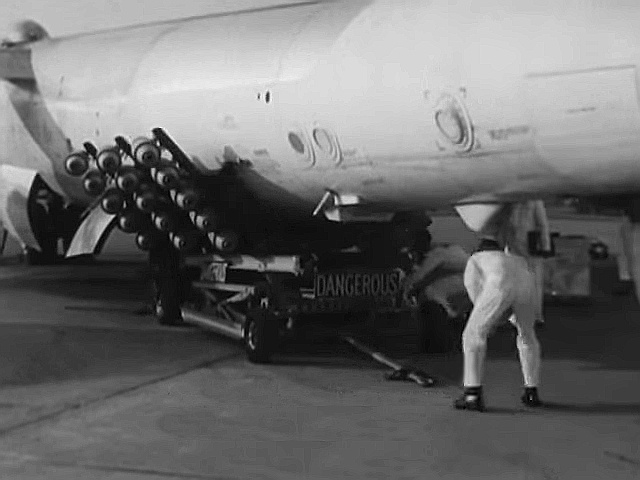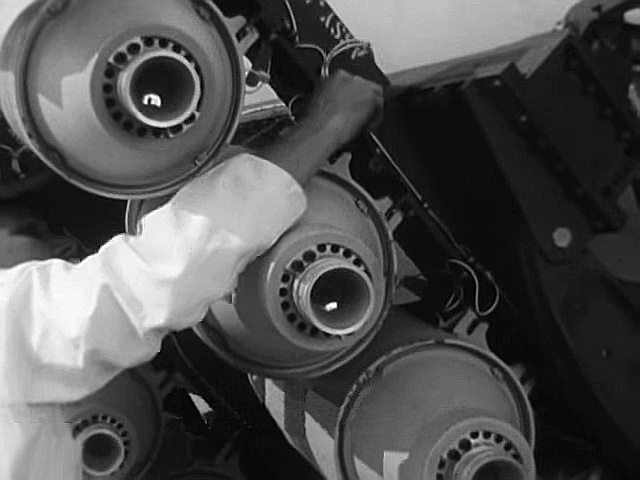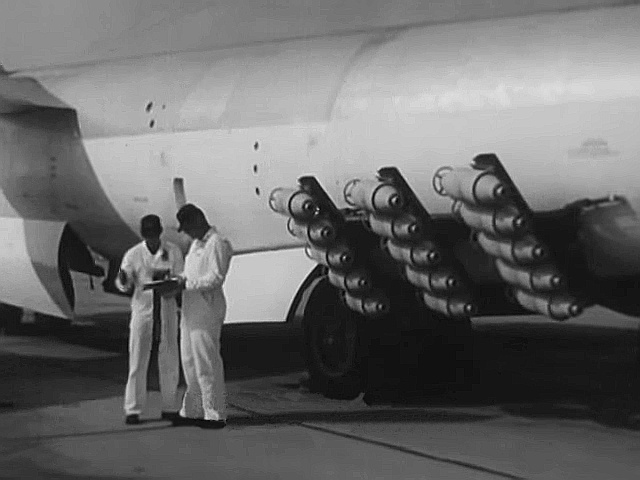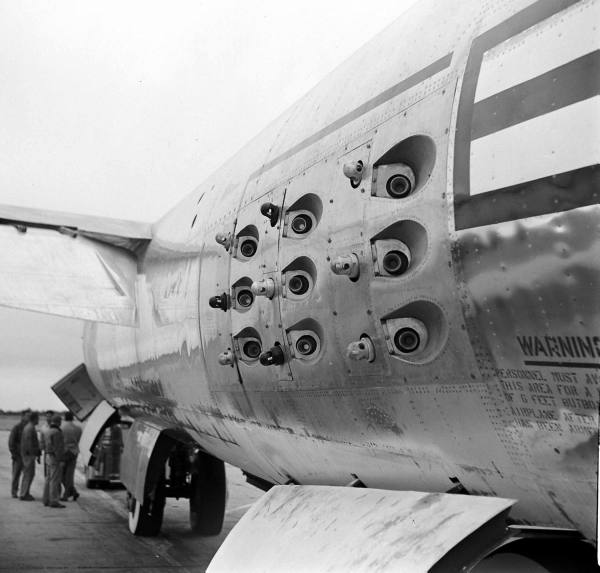B-47 Jet-Assisted Take Off (JATO)
The B-47 Stratojet was the United States' first large, jet-powered bomber, with its first flight occurring shortly after the end of World War II (December 1947). Early jet engines were inefficient at low speeds, leading to long take off distances. To address this shortcoming, provisions were made for the B-47 to use a jet-assisted take off (JATO) system to provide additional thrust. This led to some dramatic photos of the bomber taking off:
Click image for a 1800x1187 pixel version of this image in a new window.
Photo 061024-F-1234S-008 from the Edward
Air Force Base media gallery.
Cleanup by heroicrelics.
The term "JATO" was coined (in the U.S., at least) in the early 1940s. A JATO system's thrust is actually provided by a number of small, solid-fueled rockets, making "rocket-assisted take off" more accurate; however, the term "jet" was used instead of "rocket" as rockets in pop culture were at that time still the stuff of Buck Rogers and science fiction.
The early B-47s (up to and including the early B-47Es) were equipped with an internal JATO system. Eighteen 1,000-pound thrust JATO bottles were mounted internally, with three rows of three in a panel above the rear landing gear on each side of the fuselage. Careful inspection of the photo above shows this early JATO configuration.
Here's a screen capture showing the internal B-47 JATO configuration:
Click image for a 1440x908 pixel version of this image in a new window.
Screen capture from the How It Works: Boeing B-47
Stratojet Bomber YouTube video.
Capture and post-processing by heroicrelics.
And the business end of the internal JATO system:
Click image for additional information about this image in a new window at Google's Life Magazine archive page.
This 18 internal JATO bottle arrangement was less than ideal: There was concern about having live rockets so close to the aircraft's fuel (the B-47's wings were too thin to hold fuel; thus, all of the fuel was in tanks inside the fuselage). After takeoff, the empty JATO bottles were just dead weight.
Improvements in the B-47's J47 jet engines (particularly water-methanol injection, where a mixture of water and methanol was injected into the engines at take off, increasing mass flow and thus the level of thrust), reduced the need for JATO (the water injection also caused the engines to emit black smoke, due to the incomplete combustion of the fuel). Thus, shortly after the B-47E was introduced, the internal JATO system was replaced by an external "horse collar" rack equipped with three rows of 11 1,000-pound rockets which could be mounted behind the rear landing gear. After takeoff, the entire rack (with the empty JATO bottles) could be jettisonned.
Click image for a 1800x1416 pixel version of this image in a new window.
Photo 061024-F-1234S-011 from the Edward
Air Force Base media gallery.
Reconstruction by heroicrelics.
At some point, a "split-V" rack was introduced, with three rows of five JATO bottles located on either side of the fuselage. Here we see the rack being installed:

Screen capture from the U.S. Air Force Safe Handling
JATO Rocket Bottles for B-47 Airplane YouTube video.
Capture and post-processing by heroicrelics.
A more detailed look at the rows of JATO bottles:

Screen capture from the U.S. Air Force Safe Handling
JATO Rocket Bottles for B-47 Airplane YouTube video.
Capture and post-processing by heroicrelics.
After the rack was installed, the ignition leadwires of each individual JATO bottle were individually connected:

Screen capture from the U.S. Air Force Safe Handling
JATO Rocket Bottles for B-47 Airplane YouTube video.
Capture and post-processing by heroicrelics.
And the rack after installation has been completed:

Screen capture from the U.S. Air Force Safe Handling
JATO Rocket Bottles for B-47 Airplane YouTube video.
Capture and post-processing by heroicrelics.
Various models of B-47s required 9,100 to 10,400 feet for take-off; with the assistance of the JATO system, this was reduced to 7,200 to 7,350 feet.




